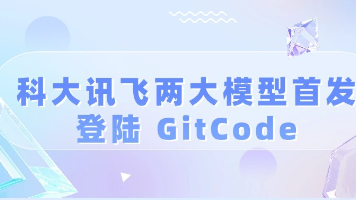【fastjson2.x 记录】那些从1.x升级到2.x踩过的坑
这篇文章主要记录升级到 fastjson2.x 版本后出现的一些问题
1. jar 包引入问题
问题描述:从 2.x 版本后,fastjson 貌似开始对代码模块进行了拆分,所以在调整配置的时候,会发现有些类突然没了,其实是需要引入其他的扩展包。
从 2.0.22 版本开始,需要引入下面三个 jar 包
<dependency>
<groupId>com.alibaba.fastjson2</groupId>
<artifactId>fastjson2</artifactId>
</dependency>
<dependency>
<groupId>com.alibaba.fastjson2</groupId>
<artifactId>fastjson2-extension</artifactId>
</dependency>
<dependency>
<groupId>com.alibaba.fastjson2</groupId>
<artifactId>fastjson2-extension-spring5</artifactId>
</dependency>起初的 2.x 版本,只需要引入前两个 jar 包,后面想更新一下新版本,好家伙,又分出来一个 fastjson2-extension-spring5,其实就是将 spring 的一些相关的配置类独立出来了。

用的最多应该是 redis 的序列化类,还有 http 的消息解析器。
2. 自定义序列化 ObjectWriter 类的 writeXXX 方法问题
问题描述:1.x 版本中 SerializeWriter 的 write 方法,在 2.x 版本中 ObjectWriter 并没有提供,反而提供很多不同的 writeXXX 方法,匹配不同的返回类型,如 writeString 方法,就会返回一个字符类型。
之前系统使用 1.2.83 版本,写了一个 LocalDateTime 序列化为时间戳毫秒数的自定义序列化类,使用的是 SerializeWriter 的 write 方法。
public class DateJsonSerializer implements ObjectSerializer {
@Override
public void write(JSONSerializer serializer, Object object, Object fieldName, Type fieldType, int features) throws IOException {
SerializeWriter out = serializer.getWriter();
if (object == null) {
serializer.getWriter().writeNull();
return;
}
if (object instanceof LocalDateTime) {
LocalDateTime localDateTime = (LocalDateTime) object;
out.write(localDateTime.toInstant(ZoneOffset.of("+8")).toEpochMilli() + "");
}
}
}控制器测试代码如下
@GetMapping("/test")
public DemoTestResponse test() {
DemoTestResponse response = new DemoTestResponse();
response.setDateTime(LocalDateTime.now());
return response;
}返回对象如下
@Data
public class DemoTestResponse {
@JSONField(name = "date_time", serializeUsing = DateJsonSerializer.class)
private LocalDateTime dateTime;
}postman 运行后结果如下,可以看到自定义序列化生效了,并且返回了数字型的时间戳。

升级到 2.x 版本后,重写了这个自定义序列化类,如下
public class DateJsonSerializer implements ObjectWriter {
@Override
public void write(JSONWriter jsonWriter, Object object, Object fieldName, Type fieldType, long features) {
if (object == null) {
jsonWriter.writeNull();
return;
}
if (object instanceof LocalDateTime) {
LocalDateTime localDateTime = (LocalDateTime) object;
jsonWriter.writeString(localDateTime.toInstant(ZoneOffset.of("+8")).toEpochMilli()+"");
}
}
}这里使用了 JSONWriter 的 writeString 方法,这也是问题所在,还是运行上面的方法,返回结果如下,变为了一个字符串了。

因为当时没留意,所以就以为 writeString 的意思是参数为字符串类型就用了。其实 JSONWriter 类提供了很多的 writeXXX 方法。
这里我们应该使用 writeMillis 方法,如下图
@Override
public void write(JSONWriter jsonWriter, Object object, Object fieldName, Type fieldType, long features) {
if (object == null) {
jsonWriter.writeNull();
return;
}
if (object instanceof LocalDateTime) {
LocalDateTime localDateTime = (LocalDateTime) object;
jsonWriter.writeMillis(localDateTime.toInstant(ZoneOffset.of("+8")).toEpochMilli());
}
}运行结果如下,问题解决。

3. JSONField 注解智能匹配失效
问题描述:在使用 1.x 版本时,字段使用的@JSONField(name = "openid"),前端传过来的字段名为 open_id,接口能正常运行。但是升级到 2.x 版本时,就为空值。
这是一个隐藏很深的bug,估计是当时开发接口的时候也没有注意,接口已能够正常运行。但是升级到 2.x 版本时,就出问题了。
其实这得益于 fastjson 的智能匹配,忽略了大小写和下划线,依然将 json 映射成功。但是在 2.x 版本后,貌似智能匹配并没有默认开启,所以就出现映射不成功的情况。
笔者尝试使用 开启智能匹配,但是没有成功,原因未明,先记录下来,后面有时间去看一下源码。从官网的 Issues 来看,也有不少这种序列化和反序列化的问题,先版本的更新也针对这种情况的比较多。
请求接收的 bean 如下,使用 JSONReader.Feature.SupportSmartMatch ,依旧是使用 openid 这个字段名称。
@Data
public class XcUserEquityRequest {
@JSONField(name = "app_id")
private String appId;
@JSONField(name = "openid", deserializeFeatures= JSONReader.Feature.SupportSmartMatch)
private String openId;
}请求的时候,依旧使用 open_id 下划线的形式。

但是接口映射的openid字段为空。

官方对 SupportSmartMatch 的说明如下,

更多推荐
 已为社区贡献1条内容
已为社区贡献1条内容









所有评论(0)